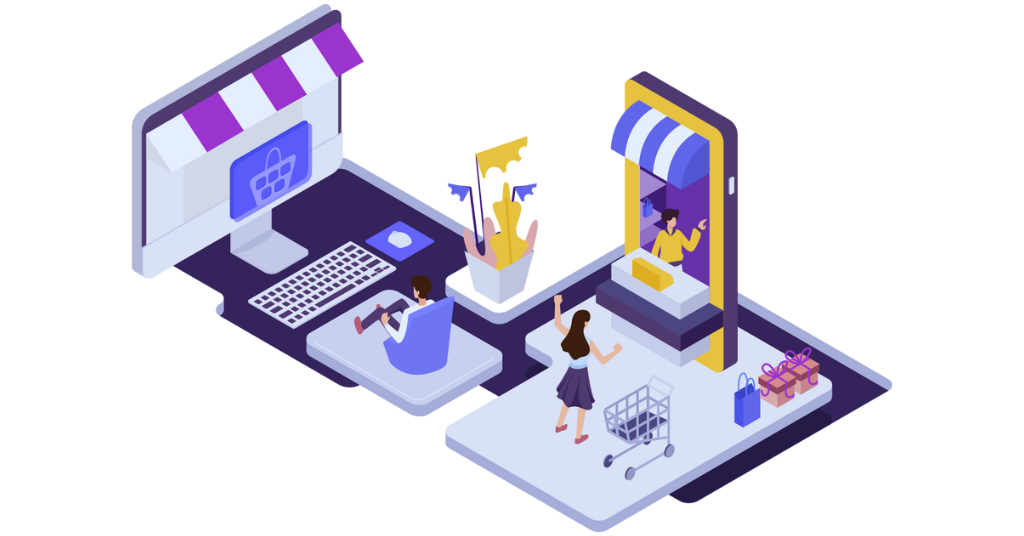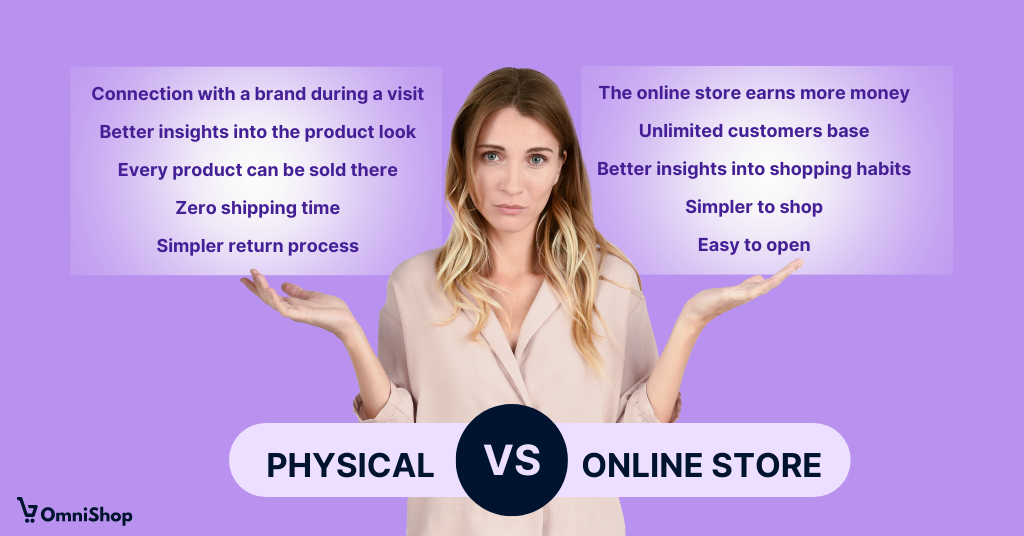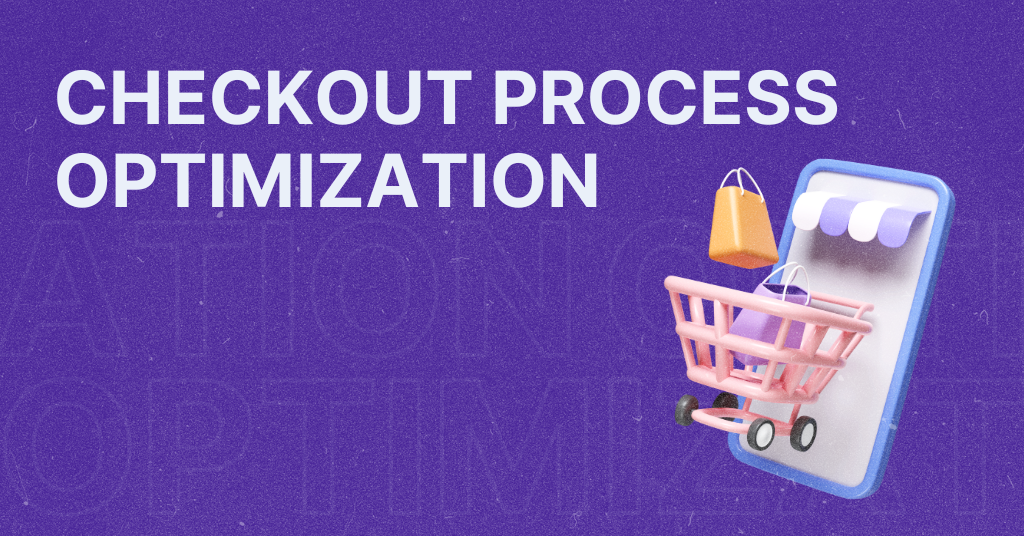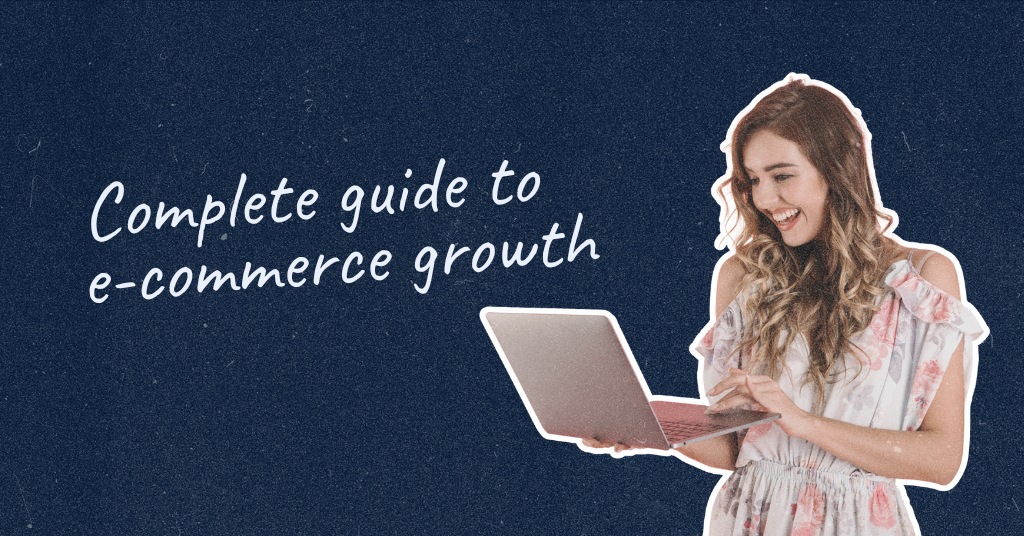
Physical store vs. online store: what is better for your business?
The never-ending dilemma: which is better to have, a physical or online store?
Which can increase sales, reach a wider audience, and cost you less?
Are you a local business already well known in your market? Are you thinking of going online and spreading across your borders?
Or do you have an idea and a great product to sell but are wondering if you should sell it online, open a brick-and-mortar store, or find markets to sell it in?
You are in the right place if you have any of these questions!
We’ll cover all the pros and cons for physical and online stores, so you can decide what works best for you and your business.
What is a physical store?
A physical store is a traditional brick-and-mortar store that customers can visit; it has a space to display and sell products.
Some stores rely more on window shopping. Others serve clients with specialized needs and remain relatively unknown to the rest of the public.
For example, a candle store in a mall attracts shoppers with its displays and fragrances. A swimming pool supply store may not be in a visible location, but its customers reliably return for its unique products. Targeting a specific market segment is called a “niche”, and the most profitable niches in e-commerce are well-known to a broad audience.
Physical stores could be independent businesses or franchises. Independent companies target locals, while franchises can rely on widespread brand recognition.
What is an online store?
A digital or online store refers to an e-commerce site. An online store is a shopping website where customers can browse and order products. It involves managing a business on the Internet. Online stores can have dedicated web domains or web pages on social media sites or online marketplaces.
Companies can run an online store as one aspect of their business or rely entirely on it. The most prominent example of a digital store is Amazon.
What’s better for my business – physical store vs. online store
People make a strategic choice when deciding whether to open a physical store, an online store, or both. The products, audience, location, and size of the company all affect which approach a business should take. Let’s look at the main benefits of physical stores and, later, online stores.
Benefits of physical stores
- Customers connect with a brand during a first visit
When customers visit a store, they get to meet the employees, connect with the brand, and feel the in-store atmosphere. Customers often value input from sales associates when shopping, which directly affects sales.
- Better insights into the product look
Seeing products in person may result in less confusion or dissatisfaction with purchases.
- Every product can be sold in a physical store
Some products, like cars, are challenging to shop for online because of the procedures like signing the contract or shipping the car (you can’t put it in a mailbox, right?). Physical stores can sell everything from large and complex goods to small and inexpensive items.
- Zero shipping time
Consumers can avoid shipping costs and take their products home right away.
- Simpler return process
Returning products bought online might need repackaging, visiting a post office, and waiting for a refund. Physical stores make returns simpler and quicker.
Benefits of online stores
- The online store earns more money
Online stores can make more money than physical stores. That is because they have fewer expenses, which means they can earn more profit. For instance, physical stores usually only make 0.5% profit, but online stores can make as much as 4.5%. Expenses that include rent, utilities, and the costs of hiring in-store employees don’t apply to online stores.
- Unlimited customers base
Online stores can reach almost any customer. An online store can sell products worldwide as long as shipping is available. This increases potential profits since the business is open to more than one area or demographic.
- Better insights into shopping habits
Online stores can get insights into customer habits by tracking analytics about the most-visited pages and items. Their shopping habits can be used for further marketing.
- Online stores are simple
If well-designed, mobile apps are user-friendly and easy to navigate. The ease of use makes them simple and convenient for customers. Also, owners can sell even the items they keep in their homes and do the shipping themselves. This perfectly explains the simplicity of starting an online business.
- Opening an online store is easy
With today’s available resources, almost anyone can start an online business. Unlike physical stores, owners only need to gain access to inventory and shipping. It’s much easier and cheaper to create a webshop than it is to open a physical store. The business can avoid risks because there’s not necessarily rent or employee wages.

Is having an online store better than a physical store?
It is often said that the numbers speak for themselves. One survey found that 80% of retailers saw online sales increase in 2020. Also, 46% of those retailers saw an increase in online sales of 25% or more.
People are switching to online more and more each day. Even generations that had to learn how to communicate with mobile devices are now shopping online. Global ecommerce sales are expected to hit $7.39 trillion by 2025, continuing the upward trend from the current figure of around $6 trillion in 2024. So, why are online sales growing?
Here are some of the main reasons why online shopping is growing so much.
1. Brands are more open to the world
Have you ever been traveling and wished the incredible shop you discovered was in your city? With a local business, you can only attract customers who come to your store.
Breaking physical barriers is a significant advantage of running an online business. With an online store, you’re open to more than just your local area. Instead, you can sell to customers worldwide through the power of the Internet. That’s why some businesses start by opening an online store while others extend it after owning a physical store.
2. Customers can shop from anywhere, anytime
Online shopping offers the convenience of shopping from anywhere, at any time. That’s precisely why brands switch to mobile. Customers can browse and buy products without leaving their homes and can have items delivered to their doors. For example, Amazon offers one-click ordering and same-day delivery in some areas. By 2025, it’s predicted that nearly 80% of all ecommerce transactions will happen on mobile devices, making mobile-first design essential for success.
3. Customers can find products easily
Online shopping offers the convenience of being able to shop from anywhere, at any time. That’s why brands switch to mobile. Customers can browse and buy products without leaving their homes and have items delivered to their doors. For example, Amazon offers one-click ordering and same-day delivery in some areas.
4. Reviews are a must
Online shopping allows customers to read reviews from other customers before purchasing. 93% of shoppers say online reviews influence their purchasing decisions. This helps customers make decisions and avoid buying products that might not meet their expectations.
5. Brands know who their customers are
Online shopping allows retailers to personalize the shopping experience for individual customers. Brands can use data and algorithms to recommend products. For example, Sephora offers recommendations based on a customer’s past purchases and preferences.
6. Online shopping offers more accessibility
Online shopping allows customers with disabilities or mobility issues to shop for products without leaving their homes. This can provide access to products and services for people needing help visiting physical stores. For example, Target offers some features on its website, like font sizes and keyboard navigation.
7. Upsell and cross-sell
With e-commerce, you can start different marketing strategies to encourage conversion. For example, a product page can show your client complementary products, known as “cross-selling,” or the ones with higher value, known as “upselling.”
8. Highly segmented marketing = higher conversion
Selling online allows you to segment your clients and launch better-customized offers. For example, if you sell products for kids, you can create:
- One promotion to be sent only to the clients in your database with children 0 through 2 years old.
- Another one for those who have children 2 through 5 years old.
- And a third one, specifically for those with children 6 through 8 years old.
The result? Clients will be more satisfied (because they are getting offers that cater to their needs).
9. Selling digital products online
By “digital products,” we mean:
- Music.
- Books in electronic format.
- Online courses.
- Video games.
- Etc.
That is to say, every product that can be consumed on an electronic device. Among the examples we presented are some of the best-sold products online. The great thing about selling digital products is that you don’t have to worry about storage.
The physical store may be ‘old school’, but it still works
As they say, every coin has two sides, and we won’t make an exception. Physical stores continue to excel at several points that virtual stores have yet to reach.
Let’s see what they are.
1. Customers want to see the product
Shopping in a physical store provides a multi-sensory experience. Customers can touch, feel, and try on products before purchasing, which can be essential for clothing, makeup, or furniture.
2. Your only competition is in your area
When selling online, every store in the world that sells the exact product you do is your rival. However, with a physical store, your only competition is shops from the same area. But that also means having a much-reduced potential market.
Competition can be taken care of thanks to a good marketing strategy. On the other hand, if you want to reach more potential clients with a regular store, one of the options is to diversify and broaden your product catalog.
3. Hacker-free shopping
This is getting less common, but some customers still don’t feel comfortable sharing their information online. They feel more comfortable buying in a store where they can be sure hackers will not steal their data.
Also, customers can see and touch products, reducing the risk of fraud or purchasing counterfeit products.
4. No shipping costs and no waiting
Shopping in a physical store allows customers to take their purchases home immediately. This can be especially appealing to customers who need a product quickly or who want to avoid the uncertainty of shipping times. 80% of consumers prefer shopping in physical stores for items they need immediately, such as food, household goods, or last-minute gifts.
5. Social experience
Shopping in a physical store can be a social experience that online shopping can’t replicate. Customers can shop with friends or family and make a day of it or enjoy interacting with sales associates and other customers. For example, Lululemon offers in-store yoga classes and events to build community and engage with customers.
6. Personal service
In physical stores, customers can receive personal assistance from sales associates. Store employees can recommend, answer questions, and offer advice.
Is marketing different for physical and online stores?
Online and traditional retail require different marketing approaches, but both need marketing strategies. Marketing for both types hinges on building brand identity and a customer base. In conventional stores, we direct marketing to local buyers. In online marketing, efforts narrow the customer base to a broader audience.
Physical store marketing strategies can vary. Independent stores often use local advertising to attract customers, while franchises can rely on their brand recognition to be the go-to choice.
Online stores market to customers using social media, online publicity, and paid ads. Targeted ads make it easier for online stores to reach their ideal audience. A solid social media presence can also help an online store gain recognition and reduce the need for paid ads. Online publications may also feature unique online retailers in their product recommendations.
Search engine optimization (SEO) is vital for online and traditional stores. SEO is critical for online stores as it helps them reach the top of the search engine results page. For traditional stores, it’s essential to use SEO to be found by locals and differentiate themselves from nearby competitors.
Combination of physical stores and the online world
The rising trend of online retailers investing in physical stores shows how combining both can have benefits. Physical stores can improve a brand’s image and add value for customers. They can also ease online shopping by providing a convenient way to buy online but use curbside pickup instead of postal shipping.
E-commerce continues to be the driving force for many businesses. Physical retail locations can be essential in meeting customer expectations. But those expectations can still be completed in the online world.
Brands that combine online shopping and physical store unlock new sales opportunities. Understanding the differences between these two business types is essential. Meeting customer expectations and surviving in an increasingly competitive business environment is challenging.
Revolutionizing retail technologies
As the retail industry continues to evolve, so do the technologies that enhance the shopping experience. Brands, from online shopping to physical stores, rely on technology to create a seamless customer experience.
Technologies that enhance physical stores
Innovative companies have developed tools to help physical and online stores provide better customer experiences. Let’s take a closer look at how they operate.
Softech Solutions has created a fantastic digital tool known as Digital Spark. It’s a platform that transforms how retail brands manage sales and rewards their staff performance. By using it, brands can improve the customer experience and increase profits.
Digital Spark offers real-time sales tracking and measurable results. This enables optimizing inventory and building solid relationships with employees through automated reward programs. Sales incentives are a great way to motivate employees and improve their performance.
Data DO is a company that specializes in helping businesses increase revenue by combining data science with market understanding.
One of the biggest challenges for retailers is determining which products to display. According to Nielsen, 55% of shoppers make buying decisions in-store. This means that the product assortment on shelves affects buying behavior.
Their platform, SPECTRA, enables retailers to use predictive analytics for assortment optimization and improve their gross margin. By analyzing POS data, SPECTRA can identify the products that are most likely to sell in each store and suggest changes to the product mix.
This way, retailers improve profitability and deliver a personalized shopping experience to customers.
Technologies that enhance online stores
Cart Boss has created a solution that offers an easy way to recover abandoned carts and reduce the dead stock using text messages.
CartBoss verifies phone numbers and detects the recipient’s language without additional work. After clicking on the link in the message, visitors get redirected to the checkout page filled with all their information ready for purchasing.
Years of experience in e-commerce helped us track problems and create a solution to fit the needs of online customers – OmniShop. Our team makes high-performing mobile apps for e-commerce from existing webshops. For online shop owners, this means making their brand stand out and growing customers’ trust. But the app means customers have an exceptional shopping experience.
With a mobile app, owners can have data-driven decisions by tracking analytics. OmniShop mobile apps can be integrated with services like Apple and Google Pay, Stripe, Firebase, and Google Analytics. We support both iOS and Android platforms natively. The platform can create mobile apps for WooCommerce and Shopify (coming out soon) stores or connect to custom shops with a public API.
Beautiful and user-friendly interfaces will set the online store up for the future and ensure customer loyalty to their brand. It’s also a sure path to increased brand recognition and awareness.
How to be successful? Use the omnichannel approach
Thanks to today’s technology, shoppers can enjoy the best of both worlds – physical and digital. From mobile apps to digital fitting rooms, companies need to provide a great experience for customers as they jump from one platform to another.
If you are starting, what should be your choice? Online or offline store?
Although each business model has its advantages, the trend is that sales through e-commerce are a growing slice of the pie. Your first step should be with an online store if you set out now.
But, with all the money you save on rent and other costs, invest in creating an excellent digital marketing strategy.
The reality is that with every day that passes without you creating the virtual version of your store, you’re losing money. This is a minimum investment for all the benefits it can bring you.
If you need help with the next step and would like to speak with e-commerce experts, the Byteout Software team has been developing and connecting the best from both worlds. Contact them here.
Let’s book a 30-min mobile strategy session and give your shop a boost.
Let’s book a 30-min mobile strategy session and give your shop a boost.


